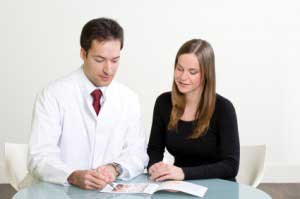
Sometimes, a person is just born with a small spinal canal. Usually, however, spinal stenosis occurs for another reason. Let’s take a look at some of the common contributors to this condition below.
5 Major Causes of Spinal Stenosis
- Tumors. These abnormal growths may develop inside of the spinal cord, inside of the membranes that cover the spinal cord, or in the space between the spinal cord and vertebrae. The formation of tumors in these areas, like the other contributors, reduces the amount of space available within the spine, causing spinal stenosis.
- Spinal injuries. Major trauma, such as a car accident, may cause fracture or dislocations of the vertebrae. The displaced bone from these injuries can harm the contents of the spinal canal. Even the treatment for spinal injuries can contribute to spinal stenosis, as the swelling from adjacent tissue immediately following back surgery can add major pressure to the spinal cord and nerves.
- Herniated disks. Disks act as cushioning and shock absorbers between your vertebrae, and tend to dry out as you age. Cracks in a disk’s exterior might permit some of the fluid from the inside to escape and press against the nerves and spinal cord.
- Overgrowth of bone. When the bones in your spine are worn and torn, bone spurs may form there. These spurs can grow into the spinal canal, creating unwanted pressure. A bone disease that usually affects adults (known as Paget’s disease) may also cause spinal bone overgrowth and, consequently, spinal stenosis.
- Thickened ligaments. Ligaments are strong cords that help keep the bones of your spine together. Over time, they may thicken and stiffen until they swell into the spine and cause spinal stenosis.
Spinal Stenosis Treatment in the Greater Princeton Area
If you have any questions about spinal stenosis or the many treatment options we offer for this condition, contact us today to schedule a consultation. Our offices are located in Hamilton, NJ, serving the greater Princeton area, and you can reach us at (609) 890-3400. We look forward to hearing from you!

